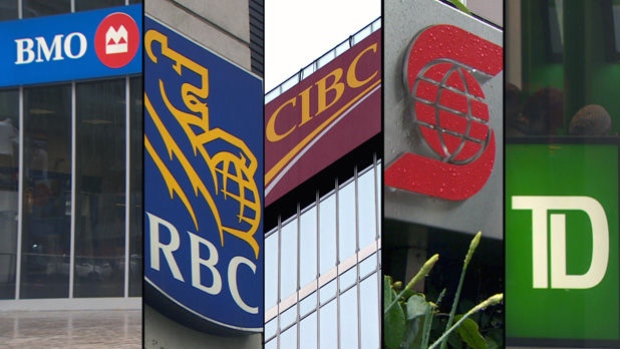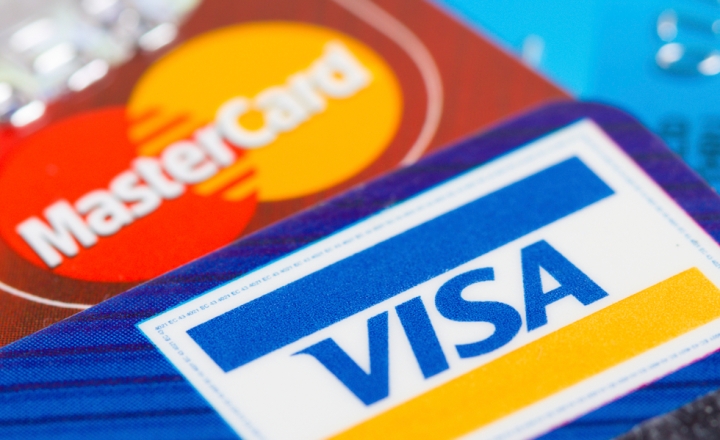Now that we’ve been in Canada for just over a year, we’re getting pretty well settled in and I’m occasionally finding myself with time on my hands! I want to use some of that time to get back to blogging about basic questions that a lot of newcomers face like insurance, taxes, and finding housing. Before making choices about spending money, however, you need a place to keep it, so the very first of these posts is going to be about banking.
If you’re thinking about moving to Canada, you’ll probably be interested in obtaining a chequing account, savings account, or credit card here. With some banks you can start these processes before you arrive, and doing so can end up saving you a lot of time and effort (and possibly even money) later on. If you’re coming from the USA in particular, and haven’t done much international travel, doing a little research ahead of time will help you set expectations and avoid confusion.
There are lots of resources online that can help you learn how the two nations’ banking systems differ, but the most basic similarity you will probably notice is that just as in the USA, there are a small number of megabanks that comprise the lion’s share of branches and ATMs that you see around most cities and towns. In Canada, the phrase “big six” is sometimes used to refer to Royal Bank of Canada (RBC), Toronto Dominion (TD), Scotiabank, Bank of Montreal (BMO), Canadian Imperial Bank of Commerce (CIBC), and the National Bank of Canada (NBC). Note that while NBC is sizable, it’s considerably smaller than the rest, which are commonly referred to as the “big five.”

Having worked in the financial services industry south of the border, I’m certainly no stranger to the idea that many Americans (especially after the crisis of 2008) have strong feelings about dealing with megabanks and would much rather choose some combination of smaller regional banks or credit unions to meet their financial services needs. For many folks, the ethical preferences involved in that choice outweigh whatever slight inconveniences or extra costs might be related. I’m not going to criticize that idea at all, and you can certainly find smaller banks and many excellent credit unions all over Canada (and move funds between them and your existing accounts using affordable exchange services like Transferwise).
If you’re prioritizing convenience and automation while banking across the border, however, you’ll probably find that the most comprehensive solutions available come from RBC, TD, BMO, and CIBC. These are financial service providers that, to varying degrees, can offer you “one stop shopping” for all your deposit accounts and credit products, in both Canada and the USA, and in some cases even transparently juggle funds between them (always look closely at the details though, and compare how fees or rates work). Since their offerings change occasionally, a generalization in a blog post is not likely to be timely, so I strongly encourage you to check out all of them and see how they might match with your needs:
Because we drive down into the states often to visit friends and family, we opted to choose one of these cross-border providers that enables us to easily manage all of our banking online via a single login with an easy user experience. Some banks “link” two different web sites together, but we wanted a completely seamless experience. Another key differentiator for us was having widespread ATM coverage around all the U.S. cities we visit most, with no fees or limitations. At the time, only one of the above providers offered both these perks, but since that could always change as banks design new products and form new partnerships, I’d encourage you to do your own research when it’s time to plan your move.
While establishing yourself in a new country it can be very helpful to have a single point of contact for all your financial concerns, but even if you decide to go with multiple smaller banks or credit unions, your most immediate needs are likely to be the same as ours were: chequing accounts, savings accounts, and credit cards. While every family’s needs and preferences may differ, there are at least two two key differences between American and Canadian consumer banking products that I think are worth knowing about before you start to shop around.
First, let’s talk about credit cards. Do not be surprised if, even as someone with an excellent credit history in the USA, you are initially denied on a credit card application in Canada. From the perspective of an American, it may seem like Canadian credit card issuers are more strict (or even stingy) about extending lines of credit to new borrowers with no native financial history. There are a number of reasons, both cultural and legislative, for that difference, but don’t fret because most if not all of the major card issuers in Canada will be happy to set you up with a secured card regardless of your newcomer status. You may or may not find details about this option online, so be sure to discuss it with whomever you interact with while setting up your first Canadian bank accounts. Every major bank offers secured cards, even if they’re not advertised, but applying for one might require a branch visit (which is a good idea in general because you take the opportunity to ask all kinds of other questions as well).
The way a secured card works in Canada is that you place a portion of your holdings with the issuing bank into a specialized savings instrument, like a GIC, and those funds remain in place to “secure” any card product they offer you (typically the terms and benefits are identical to one of the bank’s regular, unsecured, card offerings). The amount you place on deposit becomes the credit limit of the secured card, and other than leaving those funds in place at the bank, you use it just like any other credit card you’ve had before, including racking up cash back, airline miles, or reward points. Your use of the card helps build up your credit history in Canada, and as soon as a year later you should be able to use that history along with your first Canadian tax forms to demonstrate your readiness for a more traditional card account. When that time comes, the funds that have been held on deposit get released back to you (along with any interest they may have earned).

One other important note on credit cards in Canada is that depending on where you like to shop, it may actually matter whether you choose a Visa or a Mastercard! This is virtually unheard of in the states, but in the part of Ontario where we live there are a few major retailers that accept one but not the other (for example, No Frills and COSTCO exclusively accept Mastercard). We buy plenty of groceries from both, and I would never want to give up the significant cash back rewards we get every month from our credit card by only using debit on those errands, so we chose a Mastercard quite deliberately for use on the Canadian side of the border. Our card for American usage happens to be a Visa, as that doesn’t make any difference down there (and as a side benefit, it’s always clear which one we’re using or paying off).
Second, let’s talk about chequing accounts, because there’s more to be aware of than just a spelling difference. South of the border, as long as you keep a reasonable average daily balance at the bank and don’t trigger overdrafts, fees are not something you might ever associate with checking. In fact, in the USA, we even typically received our paper checks free of charge (including shipping) and didn’t pay anything extra for using ATMs that might belong to another network (and I mean fees from either end of the transaction). Before the move, I was pretty much accustomed to completely ignoring what kind of machine I might get some cash from, knowing that if any extra charges resulted, I would just see them refunded, automatically, later on.
The bad news is, you’re probably not going to find that use case among Canadian financial service providers. The good news is, you can come pretty darn close, if you shop around thoughtfully. While most Canadian banks won’t comp you completely free chequing simply for maintaining a balance, many will reduce or eliminate their fees for some combination of minimum balance, direct depositing your paycheques, and having multiple accounts/products with the same institution. There’s a lot of variety of different benefits even just across the “big five” so be a wary consumer and don’t be afraid to ask questions. With all the accounts we have with our bank, we’re paying zero fees for anything on the Canadian side and a small annual fee on our American checking account. It’s worth noting, also, that those fees are more than made up for by having easy currency transfers available with competitive exchange rates (don’t underestimate how useful that can be).
While you will seldom find a Canadian bank that refunds ATM fees that the ATM’s owner may charge, many will at least offer certain perks from their own side regarding out-of-network transactions, so take note as you compare the different account levels they offer. It’s also worth mentioning that compared to the USA, the ubiquity of Chip and PIN plus Interac Flash here may mean you’ll find yourself using cash significantly less than you have in the past. I’ve found over the past year that I use cash so infrequently up here that this hasn’t been an issue at all, in fact I often leave the house with no cash in my wallet and tend to leave a little in the car just for older style parking meters (even the farmer’s market I go to has “tap” at most stands). I even use Interac e-Transfer sometimes when paying back a friend for something or selling an item on kijiji. For the most part, cash is something I only really think about when going on southern road trips.
For your actual paper cheques, there’s also a great workaround to know about. Don’t order any from your bank, not even a starter pack when you open an account, get them from ASAP Cheques instead! They cost significantly less, come in a bunch of styles, and ship so fast you might even receive them the next day (we did). There are a couple of other services out there too, but I’ve been so happy with these guys that I recommend them wholeheartedly. The big bank versus credit union thing is subjective, to each their own in that regard, but honestly? Buying cheques directly from most banks in Canada is just objectively silly. You’ll spend twice as much, or more, for literally no advantage (in fact they are less customizable and ship slower). ASAP even offers American checks as well, if you end up needing some of those. Our cross-border banking solutions include both credit and debit cards in both currencies, so since we use one of those when travelling we haven’t come across a need for any checks for our American account…yet.
Whew, that was a lot longer than I thought it would be, but I hope I covered a lot of the basic advice one might need. This post might go out of date with time, though, so by all means if you spot a mistake or anything that needs updating, feel free to let me know in the comments. Also, be sure to check out the Personal Finance Canada sub on reddit, which is fantastic resource for these kinds of questions (and a newcomer friendly community as well).

